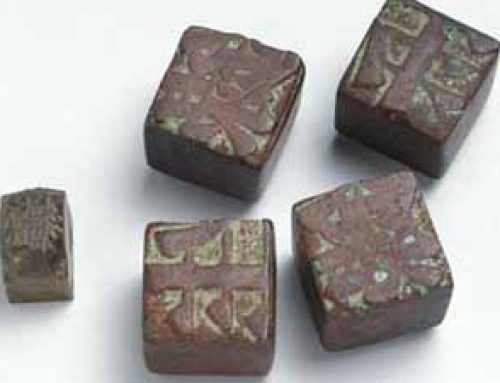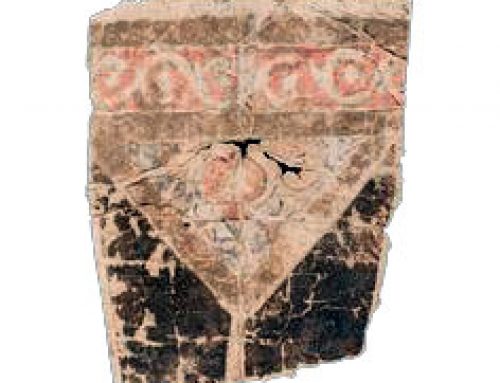
Chinese government: Empress Wu of the T’ang Dynasty
The first emperors of China
During the Stone Age, people in China lived in small villages and had big men in charge, and then chieftains. But by the time of the Shang Dynasty, about 1800 BC, China was united into an empire.
What is an empire?
Lots more ancient China articles
Chinese government was led by an emperor or empress who ruled over many smaller kings. Under these kings were a bunch of less powerful lords, and these lords ruled individual farmers. The lords collected taxes from the farmers.
Read more about taxes
The lords passed some taxes along to the kings, who passed some along to the emperor.
Examinations to pick good judges
Under the Qin dynasty, about 200 BC, the emperors managed to get a lot more power and control of the government. Instead of letting local kings run local government, Qin sent out governors and judges that he had chosen himself. These governors were loyal to China and not to the local king.
What was happening in the 200s BC?
During the Han Dynasty, the emperors started to use examinations to choose the smartest men to be their governors and judges (they lost out on a lot of good governors by refusing to pick smart women though). A lot of boys started to go to school, so they could do well on the examinations and get into political power.
Schools in China
The Han Dynasty
Religious persecution
By the time of the Sui Dynasty, about 600 AD, the emperors ordered systematic census-keeping – written records – so that they would know how much taxes everybody should pay, and it would be more fair. They used those taxes to pay soldiers to fight wars, and to dig big canals for transportation and irrigation.
The T’ang Dynasty emperors kept on doing the examinations and the census, but they also worked to promote trade as the Silk Road of Central Asia became more important.
More about Silk Road trade in China
These Chinese emperors fought more wars, and made China much bigger than before. Near the end of the T’ang Dynasty, the emperor Wuzong persecuted Buddhists and Manichaeans for their religion – but really because all the new conquered people made the old Chinese people nervous.
More about Buddhism in China
What’s a Manichaean?
Mongols bring new ideas
Under the Song Dynasty the government examinations became more and more important. But with the collapse of the Song Dynasty the Mongols invaded China from the north and Kublai Khan set up his own government. He put his own people – Arabs and Mongols and Jews and Christians – into power as governors and judges instead of Chinese people. They were loyal to him. Kublai Khan brought a lot of new ideas to China. For example, he used tax policy and laws to encourage Chinese farmers to grow cotton for clothing instead of hemp.
More about cotton in medieval China
The history of hemp
When the Mongol Empire collapsed in the 1300s because of the plague, the Ming Dynasty brought back the old Chinese government examinations. But many Muslims continued to work in the Ming government too.
BONUS ANCIENT CHINA FACTS:
Did you know?
-
People in China invented paper?
-
Peaches come from China?
-
A Chinese doctor invented a treatment for malaria?
-
The earliest known camera came from China?
Did you find out what you wanted to know about ancient Chinese government? Let us know in the comments!
Learn by doing: Chinese terracotta army
Chinese schools
History of China
Bibliography and further reading about ancient Chinese government:






this was zero help know I have to find a new website
Well, I’m sure Google will help you! But if you’d like to ask your questions here, I’ll try to answer them.
Thank You very much for this useful information..
hi and thanks this helped alot
what day did they form the empire??
Nobody knows exactly; sometimes long-ago historians tried to guess, but they are probably wrong, so we don’t report their ideas in our articles. In any case the calendars have changed so much that it would be hard to know what day in our calendar they meant.
Hi there.
I have just read your guys’ “About” tab and see that this website has been around since 1994, yet I have never come across this site. Is this a reliable source of information? And what are the steps taken when admitting a writer and/or what procedure is followed in order to ensure the information given on this page is accurate and valid?
Hm. Well, you could read some of the books cited in the bibliography for this article and see that they contained the same information. Or you could read similar pages in other encyclopedias. I wrote this myself, so I stand behind it, but like anyone else, I can make mistakes. Let me know if you find anything wrong.
(The site used to be known as History for Kids, which is probably why you don’t know it by this name. But I don’t know how hard you have been looking, either.)
hi, this was very helpful
Thank you! If there’s a teacher or library site you could point us out to, so they’d link to us, that would be super appreciated!
I like your site. It was very helpful! Keep up the good work! Bye!!!!!!!!!!!!!
who is the publisher of this site?
The company is Kidipede, Inc. but we do business now as Quatr.us Study Guides. There’s no parent company, just us.
hi
This information really helped. Thanks Karen
hi
Hi Grace! Thanks for stopping by!
hi
HELLLLLP MEEE!!
Happy to answer your questions, Jeff! Just ask them here.
Hi there
her head bigg dab
It’s probably more about how artists wanted to draw people, than how her head really was.
were do i find the government
This article is all about the government! Was there a more specific question you had?
hey
hi find what i need :(
What were you trying to find out? Maybe I can help!
this is great thanks
how did they view the highest class? did they respect them?
I think really it depended on individuals: just like with politicians and powerful people today, people respected you if you seemed to be doing a good job and working hard, and they didn’t respect you if you seemed to be lazy and uncaring.
I need more about government not other stuff
Go ahead and ask your questions here, Avery, and I’ll try to answer them!
I hate everything and everyone!!!!
Sounds like you are having a hard day, Kelly :( Try this: do something nice for somebody else – thank them for their work, or tell them how much you admire their project – and I bet you will feel better! What will it be?
same tbh
I am sorry if you didn’t have any info because you have the best info in the world keep it up!!!!!
I need help with the Government stuff and this site has barley.
Hi Alex! What’s your question?
Yea
i didnt get what i was looking for
That’s too bad, Sam! What were you looking for? Did you try clicking on the links in the article?
Thxxx. I have to do a report and this helped a lot!!!
You’re welcome, Hannah! Good luck with your report!
Thank you for this! I have to do a research paper on ancient China and this helped me a lot :)
How many governor was in china?
It depends on the year: the number of governors changed as different emperors rearranged their government, and as different places were conquered or broke free of Imperial rule. Just like in the United States, the number of governors changes as we added more states.
I didn’t find out what i wanted to
Go ahead and ask your question here, Mikayla, and I’ll try to answer it.
this helped me alot!!
That’s great! Thanks for writing to let us know, Shari!
this is very helpful
Thanks, Jeffy!
Also how does one get into Ancient China’s government
In various ways: being born a boy, being born into a rich family, being born Han Chinese. But maybe you are thinking of the state examinations? You can read more about them here: https://quatr.us/china/school-ancient-china.htm
im a sixth grader and hate learning but this made it sound kinda cool
I’m delighted! Most people who hate learning discover later that they love learning when they have really good teachers. Keep searching for a teacher who works well for you.
what is the copey right date
All the citation information is at the end of the article, just underneath it.
my name is jeff
where is the HAN DYNASTY and MING DYNASTY
You can find out more about the Han Dynasty here: https://quatr.us/china/silk-road-scholars-han-dynasty-china.htm and about the Ming Dynasty here: https://quatr.us/china/ming-dynasty-china-chinese-history.htm
hi i need help answering one question?
Sure! What’s your question?
hey
hi
Hi Zack! Thanks for visiting!
this was very help full thank i got an A+ on my test thanks allot
Wow, congratulations! I’m sure you worked hard for that.
thank you this was very helpful but is all of this true ?
Yes, it’s all true :) If you want to check, you can read the books in the bibliography.
hi
Hi Fernando! Thanks for stopping by!
This was very helpful
Thanks! I’m glad we could help.
and I need an answer by the end of today by the way
Hi! Thanks for visiting! The citation information is in a box right under the article; it has the date of publication and everything else you need for a citation. (It’s higher up on the page than these comments.)
What is the date of publication on this site?